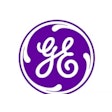
In the march to secure healthcare IT stimulus funding, no company is running as fast as one firm: Extormity. This innovative HIT software developer believes it has the inside track on federal stimulus dollars. But one question remains: Is the firm running a marathon or a sprint?
Extormity has dedicated itself to offering highly proprietary, difficult-to-customize, prohibitively expensive healthcare IT solutions. The firm believes its offerings are perfectly in tune with today's financial environment.
"We created Extormity to generate shareholder wealth," said Brantley Whittington, CEO of the firm. "Speaking confidentially, we believed that by combining extortion in the form of exorbitant pricing, and conformity in the form of inflexible software platforms that perform no better than competitive products, we can generate wealth on a massive scale."
AuntMinnie.com caught up with Whittington at last month's Healthcare Information and Management Systems Society (HIMSS) meeting in Atlanta. In an off-the-record interview, Whittington provided intimate details of the company's business strategy, of which even the U.S. Securities and Exchange Commission are not aware.
Flagship product: Extormity Software Suite
The appeal of the Extormity EMR Software Suite is based on the way the product is marketed. Whittington explained the company's focused marketing strategy of luring physician practices and hospital IT professionals with mind-boggling promises of all-inclusive software solutions capable of fulfilling whatever healthcare IT requirements are needed has exceeded expectations in the firm's strategic business plan.
 |
| This exterior photo of Extormity's headquarters evokes a feeling of confident corporate power and is designed to intimidate the company's rivals in the HIT space. |
Hospitals and physician practices that have successfully implemented Extormity EMR Software Suite recognized the severe limitations of their home-grown workflows and agreed to conform to the far superior Extormity Knows Best™ Practice Model. This model, based on the observation of hundreds of practices, reflects the company's view of what is best for physician practices and hospitals given the restrictive parameters of the software applications, according to Whittington.
"The Extormity EMR Software Suite requires wholesale, revolutionary workflow change that dramatically impacts practice patterns," Whittington told AuntMinnie.com. "We believe that this is, after all, one of the objectives of the Obama administration. However, Extormity deliberately differentiates itself from the controversy associated with President Obama's objectives. Our slow and painful change process significantly interrupts patient volumes and revenues. We agree with our customers that this cumbersome transformation can only be appreciated in hindsight, often with the aid of prescription medication that can be ordered through the Extormity EMRx Upgrade Module and Pharmacy Interface Pack."
Standards adoption
With respect to standards integration, Extormity resolutely supports every alphanumeric combination that forms an acronym to describe a standard or would-be standard. These include HL7, DICOM, and IHE, as well as CCD, CCR, CDA, and even SPIFFY, an emerging standard also used as an adjective, as in, "my, what a SPIFFY interface." However, support for these standards does not mean that Extormity has a willingness to embrace them without significant integration costs, Whittington said.
Extormity did not participate in the IHE Interoperability Showcase at HIMSS, a lost opportunity it regrets. Whittington expressed remorse about forgetting to put a second postage stamp on the envelope to HIMSS containing the participation application.
He also expressed envy and applauded the many EHR companies that did participate and that demonstrated standards-based information exchange with dozens of vendors, and then subsequently refused to interface with these same vendors after the conference unless and until five-, six-, or seven-figure checks were written by their customers to pay for work that had already been completed and tested.
"These savvy EHR behemoths were out-extormitying Extormity, and we should have been there," he bemoaned.
Noting that "Extormity employs a 'reinvent the wheel' approach to interoperability, each new client is charged a handsome fee to build a custom interface and a per transaction revenue model for each 1 or 0 [data byte] that gets shared between healthcare IT applications."
Whittington admitted to AuntMinnie.com that with this approach, delays may occur.
 |
| This interior photo highlights what Extormity considers to be its primary asset: its people. |
The CEO candidly noted that central to ensuring that customers actually believe Extormity Knows Best is ensuring that while using the EHR, clinicians are so distracted that they fail to question Extormity's unquestionable authority.
As an example, its CPOE module guides physicians through a disjointed order entry process that marries electronic data capture with bright colors, games, pop-up puzzles at decision-tree points, and animal noises. Unemployed video game developers and other computer graphic whiz kids are employed to create state-of-art special effects.
Extormity's newly introduced patient portal enables patients to create a portable patient health record that individuals can carry with them, and the firm reports that the product is meeting with unprecedented success. Extormity engineers evaluated USB devices, smart cards, and even the ability to electronically transmit records to a physician. Instead, they selected punch cards, representing a technology relegated to the scrap heap, and named the new patient health record solution product "Chad." This name gained national notoriety during the first presidential election of George W. Bush and is one that people don't forget, regardless of whether they are Republican, Democrat, or apathetic, Whittington explained, with a chuckle.
The product uses the efficiency of the Internet to enable patients to enter their personal health information into a spreadsheet understandable at a sixth-grade literacy level. The information is then re-entered by a small army of octogenarian key punch operators who are delighted to augment their meager Social Security income. Completed punch cards are stacked, bound with rubber bands, and shipped to the patients, who share them with physicians' offices that Extormity equips with reconditioned punch card readers.
Extormity's customers pay dearly for the service, adding profitably to the company's revenue and subsidizing their own punch-card-operating patients and the equally feeble U.S. Postal Service in the process.
Sales strategies
Extormity markets its EHR solution to any organization with the financial resources to pay its fees. Rather than manage a complex relationship with a customer team, experienced account executives identify one or two impressionable decision-makers with the power to override the collective wisdom of a cross-functional team.
Extormity salespersons politely push aside and subtly belittle individuals who speak incessantly of RFPs, scorecards, references, and financial models. The sales staff focuses with laserlike intensity on the powerful few who appreciate private jet rides to professional association meetings, membership on elite customer advisory boards, and the opportunity to earn stock options for contributing intellectual property to the company. Whittington noted with satisfaction that once these customers are safely compromised, the robust EHR vendor review process of their organizations always seems to go the company's way.
Only the most savvy clients of Extormity are able to secure fleeting glimpses of hoped-for benefits. This process is augmented by engaging customers in an investigative process whereby they search, often in vain, for features and functions described on the company Web site, www.extormity.com.
The firm's sales strategies for government-funded contracts also are imaginative. As soon as Tommy Spencer, Extormity's executive vice president of sales, learned that the American Recovery and Reinvestment Act HIT funding was available not only to states, but also to U.S. territories and protectorates, Extormity took action.
"We doubted Guam was even aware of these grants, so we decided to apply on their behalf and without their knowledge," Spencer was quoted in a February 18, 2010, company press release announcing the successful receipt of a $1.6 million grant award. "We located a doctoral student from Guam to toss in a few local pearls of wisdom to give our grant application the ring of authenticity."
When pressed about how this will benefit Guam, Whittington compared this project to Alaska's infamous Bridge to Nowhere project. "We plan to drop-ship a few Edge servers, include a master patient index, and maybe toss in a module for nomenclature normalization. This will put Guam ahead of most states on the mainland," he said.
By Alan Smithee
AuntMinnie.com contributing writer
April 1, 2010
Copyright © 2010 AuntMinnie.com



















